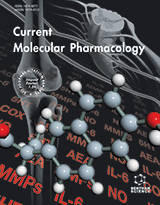Abstract
Ovarian cancer is an aggressive disease, and only a few cases are diagnosed at early stages due to the absence of symptoms. Τhe majority of malignant ovarian tumors (>90%) are of epithelial origin and are subdivided into five histological sub types according to different molecular pathogenesis and clinical behavior. High-grade serous ovarian cancer is the most common subtype (70%). However, the different histotypes of ovarian cancer should be viewed as separate diseases both clinically and in biomarker studies. At present, surgical debulking and platinum/taxane - based chemotherapy is the standard of care for epithelial ovarian cancer. Most patients show an initial response to this therapeutic approach, but the majority of them experience disease recurrence at which point cure is no longer possible, due to acquired resistance in those chemotherapeutic regimens. Nevertheless, the current treatment model is still a “one-sizefits- all” approach. Epigenetic modifications represent heritable modifications in gene expression without alteration of the DNA sequence. DNA methylation is the best-studied epigenetic mechanism, and in epithelial ovarian cancer, the methylenome is widely altered. In addition, patterns of DNA methylation may represent potential diagnostic and prognostic markers as well as markers predictive of chemoresistance and potential therapeutic targets. This article systematically reviews the complex area of DNA methylation in ovarian carcinoma and summarizes the current implications and future perspectives of its use as a screening, diagnostic, prognostic and predictive tool as well as in personalized cancer therapy.
Keywords: Ovarian carcinoma, epigenetics, DNA methylation, methylenome, high-grade serous carcinoma, therapyresistance.
Current Molecular Pharmacology
Title:DNA Methylation in Epithelial Ovarian Cancer: Current Data and Future Perspectives
Volume: 14
Author(s): Efthymia Papakonstantinou, Georgios Androutsopoulos, Souzana Logotheti, Georgios Adonakis, Ioannis Maroulis and Vassiliki Tzelepi*
Affiliation:
- Department of Pathology, School of Medicine, University of Patras, Patras,Greece
Keywords: Ovarian carcinoma, epigenetics, DNA methylation, methylenome, high-grade serous carcinoma, therapyresistance.
Abstract: Ovarian cancer is an aggressive disease, and only a few cases are diagnosed at early stages due to the absence of symptoms. Τhe majority of malignant ovarian tumors (>90%) are of epithelial origin and are subdivided into five histological sub types according to different molecular pathogenesis and clinical behavior. High-grade serous ovarian cancer is the most common subtype (70%). However, the different histotypes of ovarian cancer should be viewed as separate diseases both clinically and in biomarker studies. At present, surgical debulking and platinum/taxane - based chemotherapy is the standard of care for epithelial ovarian cancer. Most patients show an initial response to this therapeutic approach, but the majority of them experience disease recurrence at which point cure is no longer possible, due to acquired resistance in those chemotherapeutic regimens. Nevertheless, the current treatment model is still a “one-sizefits- all” approach. Epigenetic modifications represent heritable modifications in gene expression without alteration of the DNA sequence. DNA methylation is the best-studied epigenetic mechanism, and in epithelial ovarian cancer, the methylenome is widely altered. In addition, patterns of DNA methylation may represent potential diagnostic and prognostic markers as well as markers predictive of chemoresistance and potential therapeutic targets. This article systematically reviews the complex area of DNA methylation in ovarian carcinoma and summarizes the current implications and future perspectives of its use as a screening, diagnostic, prognostic and predictive tool as well as in personalized cancer therapy.
Export Options
About this article
Cite this article as:
Papakonstantinou Efthymia , Androutsopoulos Georgios , Logotheti Souzana , Adonakis Georgios , Maroulis Ioannis and Tzelepi Vassiliki *, DNA Methylation in Epithelial Ovarian Cancer: Current Data and Future Perspectives, Current Molecular Pharmacology 2021; 14 (6) : e301221184739 . https://dx.doi.org/10.2174/1874467213666200810141858
| DOI https://dx.doi.org/10.2174/1874467213666200810141858 |
Print ISSN 1874-4672 |
| Publisher Name Bentham Science Publisher |
Online ISSN 1874-4702 |
 16
16
- Author Guidelines
- Bentham Author Support Services (BASS)
- Graphical Abstracts
- Fabricating and Stating False Information
- Research Misconduct
- Post Publication Discussions and Corrections
- Publishing Ethics and Rectitude
- Increase Visibility of Your Article
- Archiving Policies
- Peer Review Workflow
- Order Your Article Before Print
- Promote Your Article
- Manuscript Transfer Facility
- Editorial Policies
- Allegations from Whistleblowers
- Announcements
Related Articles
-
Nutriproteomics – Linking Proteomics Variation with Personalized Nutrition
Current Pharmacogenomics and Personalized Medicine Orally Administrated Small Molecule Drugs with Intestine Targeted Profile: Recent Development and Prospects
Current Medicinal Chemistry The Role of CD40 Expression in Dendritic Cells in Cancer Biology; A Systematic Review
Current Cancer Drug Targets Anti-VEGF Molecules for the Management of Diabetic Macular Edema
Current Pharmaceutical Design Nanoemulsion Encapsulation and In Vitro SLN Models of Delivery for Cytotoxic Methotrexate
Current Drug Discovery Technologies Advances in Nano Drugs for Cancer Chemotherapy
Current Cancer Drug Targets Modulating Mesenchymal Stromal Cell Function with Cholesterol Synthesis Inhibitors
Current Medicinal Chemistry MDA-7/IL-24-Based Cancer Gene Therapy: Translation from the Laboratory to the Clinic
Current Gene Therapy The Functional Role of Long Non-coding RNA UCA1 in Human Multiple Cancers: a Review Study
Current Molecular Medicine Ceramide: Therapeutic Potential in Combination Therapy for Cancer Treatment
Current Drug Metabolism DNA Methylation in Colon Cancer: Challenges and Opportunities
Epigenetic Diagnosis & Therapy (Discontinued) An Overview of Olive Oil Biomolecules
Current Biotechnology Molecular Biological Roles of Ursolic Acid in the Treatment of Human Diseases
Current Bioactive Compounds CRM1-Mediated Nuclear Export of Proteins and Drug Resistance in Cancer
Current Medicinal Chemistry Downstream Carcinogenesis Signaling Pathways by Green Tea Polyphenols: A Translational Perspective of Chemoprevention and Treatment for Cancers
Current Drug Metabolism Identifying Biomarkers of Lung Cancer in the Post-Genomic Era
Current Pharmacogenomics Nano-Delivery in Pediatric Tumors: Looking Back, Moving Forward
Anti-Cancer Agents in Medicinal Chemistry Virotherapy as An Approach Against Cancer Stem Cells
Current Gene Therapy Pathogenic Genes Selection Model of Genetic Disease based on Network Motifs Slicing Feedback
Current Proteomics Why Multiples of 21? Why does Selenoprotein P Contain Multiple Selenocysteine Residues?
Current Nutraceuticals



























